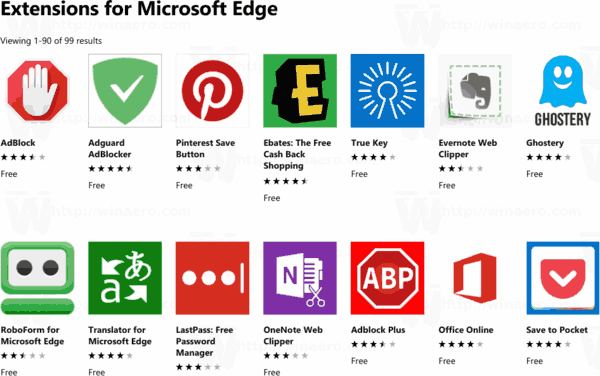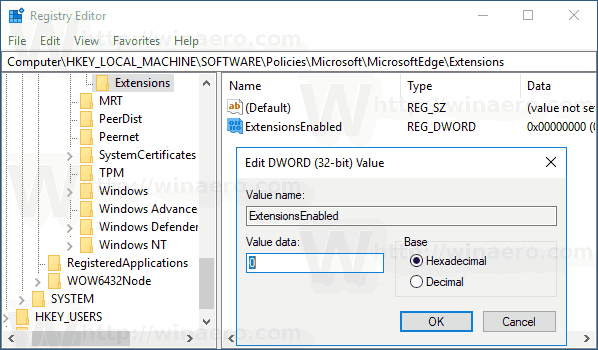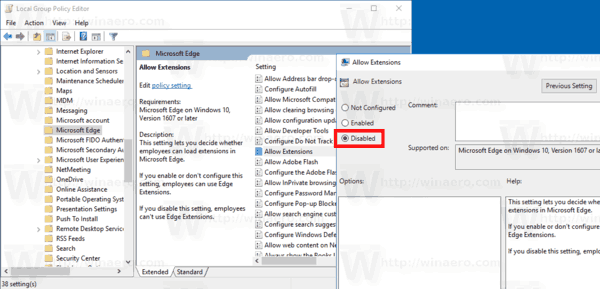Microsoft Edge is the default web browser app in Windows 10. It's a Universal (UWP) app which has extension support, a fast rendering engine and a simplified user interface. In this article, we'll see how to disable the extension support feature in Edge in Windows 10.
Advertisеment
Edge has got a lot of changes during feature update releases of Windows 10. The browser now has extension support, EPUB support, a built-in PDF reader, the ability to export passwords and favorites and a number of other useful functions like the ability to go Full screen with a single key stroke. In Windows 10 Creators Update, Edge got support for tab groups (Set Tabs Aside). In Windows 10 Fall Creators Update, the browser has been updated with Fluent Design.

Starting with Windows 10 Anniversary Update, Edge supports browser extensions. There are a number of situations when you might want to disable this feature. It can be useful if you are running Windows 10 in a corporate environment with strict rules, or you need to prevent your family members from installing untrusted web browser extensions.
There are two ways to disable Edge extension support in Windows 10. This can be done with a Registry tweak in Windows 10 editions without the Local Group Policy editor app. In editions like Pro, Enterprise or Education, you can use the GUI. Here is how.
To disable extensions in Edge in Windows 10, do the following.
- Open the Registry Editor app.
- Go to the following Registry key.
HKEY_LOCAL_MACHINE\SOFTWARE\Policies\Microsoft\MicrosoftEdge\Extensions
See how to go to a Registry key with one click. Note: In my case, I had to create MicrosoftEdge and Extensions subkeys manually. They may or may not exist in your Registry.
- On the right, create a new 32-Bit DWORD value ExtensionsEnabled.
Note: Even if you are running 64-bit Windows you must still create a 32-bit DWORD value.
Leave its value data as 0.
- To make the changes done by the Registry tweak take effect, Restart Windows 10.
You are done.
Disable Extensions with Group Policy
If you are running Windows 10 Pro, Enterprise, or Education edition, you can use the Local Group Policy Editor app to configure the options mentioned above with a GUI.
- Press Win + R keys together on your keyboard and type:
gpedit.msc
- Group Policy Editor will open. Go to Computer Configuration > Administrative Templates > Windows Components > Microsoft Edge.
- Set the policy option Allow extensions to "disabled" as shown below.

That's it.
Support us
Winaero greatly relies on your support. You can help the site keep bringing you interesting and useful content and software by using these options:


Oh if only I needed to do such things.
At the present Edge is a pain in the neck not loading pages most of the time
When it does load pages I have to turn Adblock Plus
Any advice welcome as I have tried the usual thins advised.
Set the policy option Allow extensions to “disabled” disabled ALL extensions. Is there a way to disable a single extension.